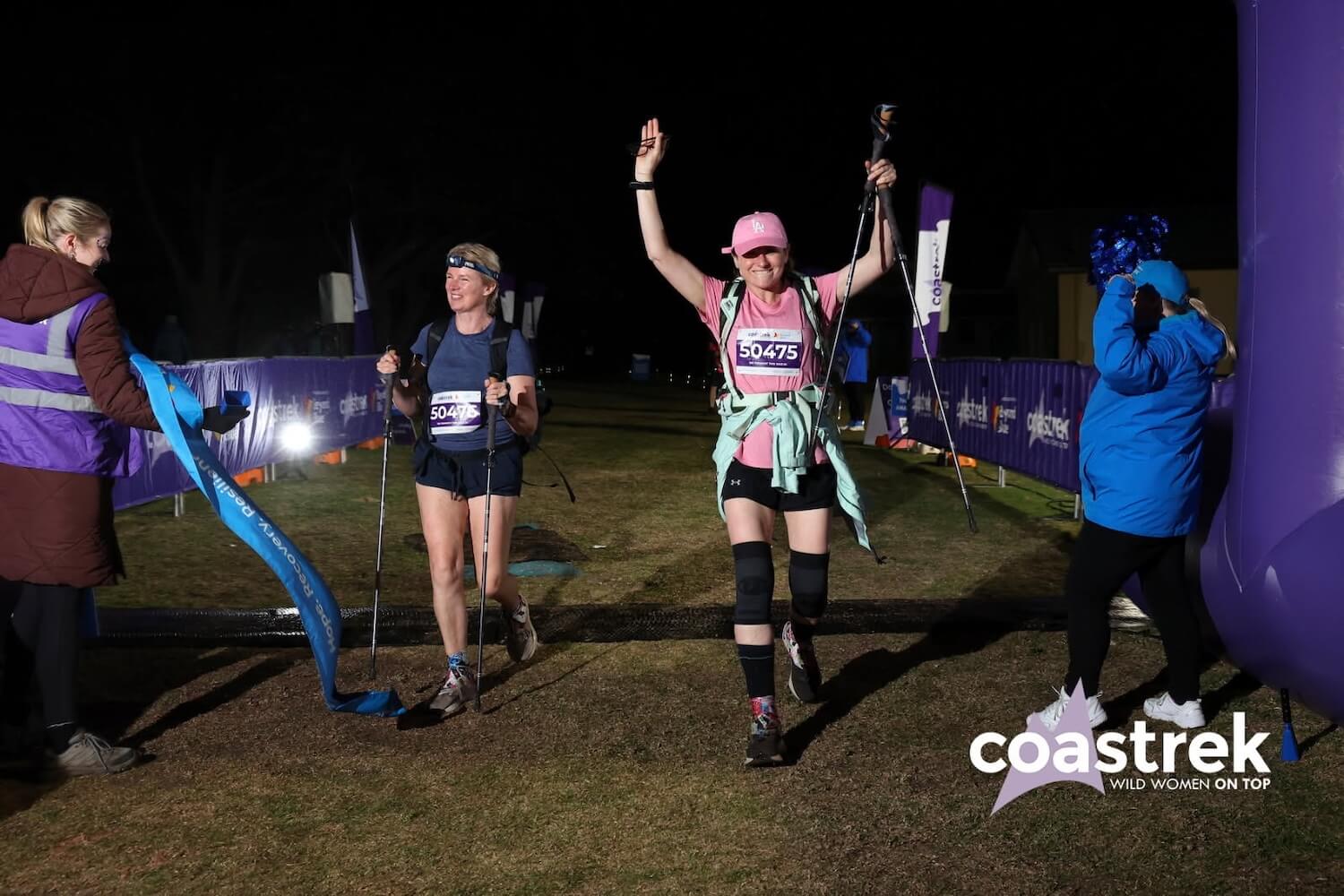It’s 4.55am and I’m boarding a shuttle to the start line of Coastrek 2025: a 50km endurance walk in support of Beyond Blue.
I’ve packed six sandwiches, a first aid kit, high-protein snacks, a quinoa and kale cup, 2x packets of salted chips, dark chocolate, electrolytes and a 3L water bladder.
I’m carrying everything myself—no support crew, no pit-stop sherpas.
This wasn’t an act of defiance. It was deliberate.
Why performance isn’t about following the plan—it’s about knowing yourself
Since registering for the event late last year, the awesome organisers sent me everything: weekly walking plans, long-distance build-up sessions, advice on tapering, tips for support crews to meet you along the way with fresh socks, food, and encouragement.
In other words: a one-size-fits-all formula.
And if I’d followed it? I might not have made it.
This wasn’t my first endurance event. Last time, I followed the official plan. The result? My knees and feet were cooked before I even got to the start line.
So this time, I did things differently.
Instead of blindly training the way I was told to, I got forensic. I listed out my strengths and vulnerabilities:
STRENGTHS
- Already half-marathon fit.
- Mentally tough: once I start, I finish, no matter the challenge.
- Strong: I lift heavy 4x/week, so carrying 28kg on my back didn’t scare me.
VULNERABILITIES
- Left knee: torn meniscus + PCL history.
- Unstable pelvis and weak glutes.
- History of heel and arch pain.
- Blood sugar fluctuations if I don’t fuel right.
So I skipped the long training walks completely.
Instead, I obsessed over what would keep me strong on the day.
- I followed my physio’s strengthening plan like a hawk.
- I researched the best walking poles for soft sand.
- I invested in top-tier shoes and doubled my socks.
- Every toe was protected with gel pads and walking wool.
- I applied a continuous glucose monitor to manage energy levels.
- I calculated calories and planned every bite I’d need.
- And I wore knee braces like my life depended on it.
The Result?
I felt incredible.
No dips in energy. No knee pain. No foot pain.
And while the next day my legs felt like they’d been swapped out for concrete pillars, I pulled up well.
The walk was brutal—20km of soft sand, 59,000 steps, 4,000 calories burned—but I finished it feeling strong.
No support crew. No drama. Just a plan that matched my body.
You Have to Do You
This experience reminded me of something I see often in my work with leaders: We get handed formulas:
“Follow this general wellbeing plan.”
“These are the steps.”
“Everyone needs this much sleep/water/protein/time in the sun.”
But your performance, whether at work, in life, or on a 50km trail, can’t be downloaded from the internet.
You have to know your body, your limits, and your strengths. You have to train for the gaps in your system, not someone else’s. That’s what real preparation looks like.
The Walk Was Also Personal
I did this for Beyond Blue because mental health has shaped my life in quiet, profound ways.
My mum lived with severe anxiety, intensified after my father died when I was 12. Mental health wasn’t talked about back then. We just carried on, quietly hurting.
I experienced major depression in my twenties. And again after the birth of my first child. These things stay with you.
Every step I took was for the five million Australians living with anxiety or depression, and for the people who love and support them.
This walk was for anyone who’s ever felt like they couldn’t take one more step.
You’re not alone.
And to anyone preparing for their own challenge, know this: you don’t need a perfect plan. You need the right one.
For you.

